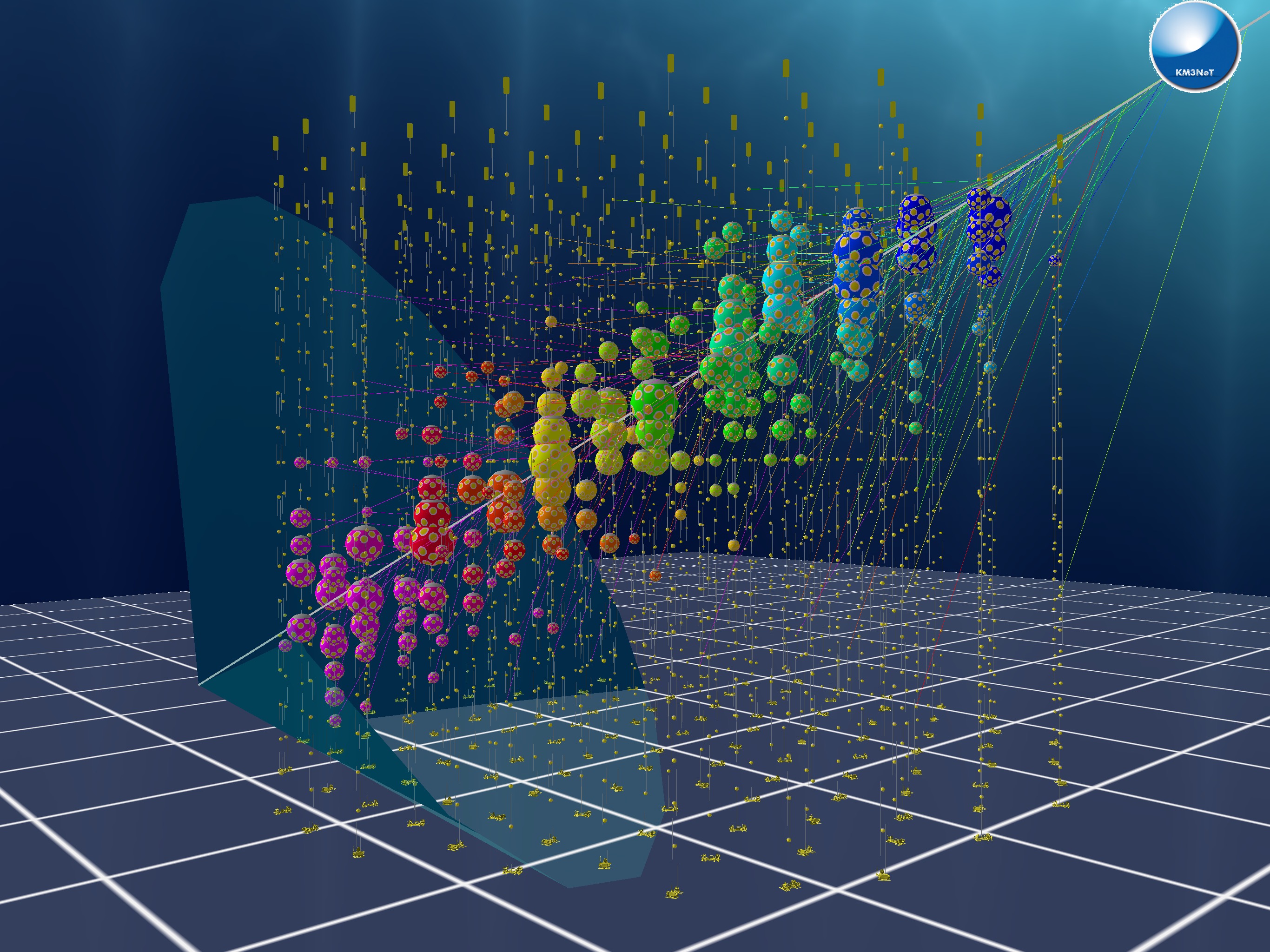
NCBJ scientists study neutrinos and muons as part of the KM3NeT experiment
11-09-2024
Neutrinos are an essential component of the Standard Model and are the second most abundant known particles in the Universe, but their properties are still shrouded in mystery. Due to their infinitesimal mass and lack of electric charge their researches offer a unique perspective of the Cosmos. The scope of new physics offered by neutrino astronomy is abundant, whether it is from the decay of exotic particles such as topological defects or relic big bang particles, or the annihilation of dark matter.
Therefore, the Department of Fundamental Research participates in the KM3NeT experiment (Cubic Kilometre Neutrino Telescope, www.km3net.org). This neutrino telescope opens a new window onto the universe, playing a key role in the study of elusive neutrinos that originated in Earth’s atmosphere as well as those coming from distant astrophysical sources. As part of our activities, we deal with the reconstruction of neutrinos and muons and the identification of neutrinos via acoustic signals generated during their interactions with matter. In these studies, we use advanced computational intelligence methods.
We are part of the National Consortium of Future Neutrino Technologies (KKPTN), which, apart from NCBJ, includes the Faculty of Physics and Applied Computer Science of AGH University of Krakow (AGH) and the Nicolaus Copernicus Astronomical Center of the Polish Academy of Science in Warsaw. Team leader of KKPTN is Dr hab. Artur Ukleja, Prof. AGH.




